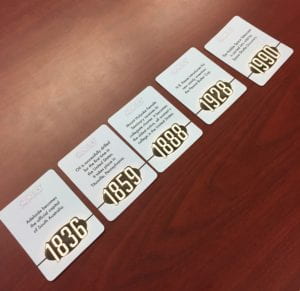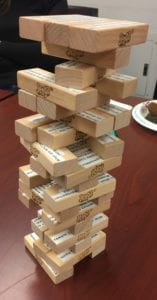This past spring semester (2018), APH student Kate Philipson worked at the Whitney Museum in New York City. Below you’ll find Kate’s blog post about her experience.
~~~
As someone who appreciates art, museums, and history, my opportunity to intern in the Archives of the Whitney Museum of American Art was an ideal fit. While had the chance to learn about the larger mechanisms of the Museum and to assist patrons with various research requests, I primarily worked with a collection titled Early Museum History: Administrative Records, 1930–1960. This collection was visible on the website by name and accessible to researchers, but with extremely limited information about what it contained. Although the 14 boxes of documents (consisting of 477 folders) had been organized to some degree in the past, my role was to “re-process” the collection and provide more description.
By gaining better intellectual control over the materials, and by identifying some physical preservation needs, we made the museum’s founding history more accessible. Importantly, the records in this collection open significant windows into not only how the Whitney operated within the first three decades of its existence, but also how it uniquely fit into the larger New York City art world and the “modern art scene” during this part of the 20th century.
The collection seemed to have been compiled in the late 1980s from a variety of different sources, but with little documentation about who initiated or worked on it, what they did and why, or how they organized the records. This drove home one of the biggest take-aways of my archival education so far – as an archivist, you must keep a record of EVERYTHING you do, and explain it! Documenting your accession and processing decisions is key. So, working with this collection proved to be challenging (and interesting!) because it was like a puzzle. There were many question marks and unknowns to resolve, regarding the organization and contents of the series, subseries, and sub-subseries, the folders themselves, and the dates involved. Having a collection that is clearly organized and accurately described makes research easier for everyone moving forward, including the archivist. Much of my work involved identifying inconsistencies between the three series from its initial arrangement, which was structured by decade, as well as making the subseries and folders more standardized.
The Whitney’s Archives are primarily intended to serve internal users at the Museum, such as the Curatorial Department. However, the Reading Room also fields plenty of research requests from all levels of scholars and historians, curators from other museums, and artists. Included in this collection of Early Administrative Records are a vast range of paper materials, from administrative files, board minutes, and correspondence, to financial, legal, and property documents. By having greater access to historic curatorial research and exhibition information, plus significant records on art, artists, the museums’ collections, and notable occurrences within the world of art history, many different types of researchers can now gain a more in-depth understanding of the Museums’ early inner workings and its historical context.


